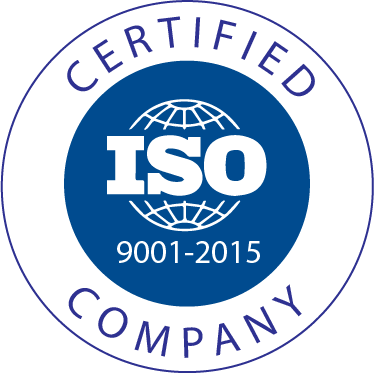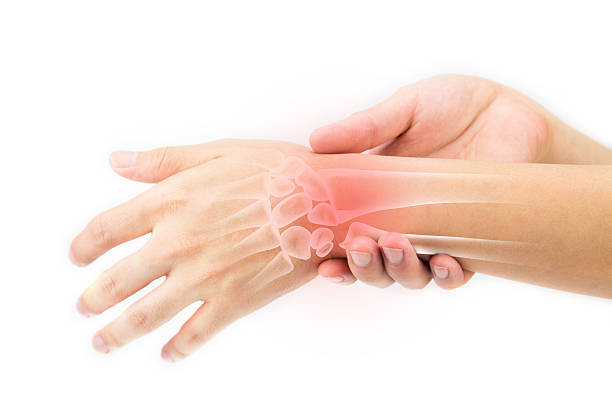Once the patient is under the influence of anesthesia, an incision is made at the site of the injury or the break and then the fracture is carefully realigned or the joint is replaced with extreme precision. The hardware required will be installed and the incision made will be closed with the help of stitches and staples. The inserted implants such as rods, pins, screws, and plates are permanent in many cases. In some cases, the implants are temporary and can be removed when the healing begins.
A cast is usually applied after ORIF surgery. Later when the healing process has sufficiently progressed, this cast will be replaced with something that is capable of bearing better weight than that. The cast is completely removed after a few weeks of the ORIF surgery. The following are the different types of ORIF procedures, depending on the locations of the fracture:
1. ORIF Fractured Patella
Occasionally cerclage wiring is used alone or in combination with a tension band wiring. If the surgeon allows, then K-wires can also be used. The reduction is checked by palpating the retropatellar surface (which requires a small arthrotomy) while the cerclage is tightened with the knee in extension.
The proximal pin ends are bent after the cerclage is tightened. They are further shortened and turned towards the quadriceps tendon and then it is driven into the patella to prevent any skin irritation and further loosening.
To remove sharp points, the distal pin ends are trimmed but then it is not bent for the purpose of easy removal. Two twists can be preferred by some surgeons to tighten the cerclage wire. But then they have to take extra care to ensure that no extra prominent wires are left protruding.
As the wires get twisted, the surgeon pulls it away from the patella to have them tightened. To prevent fixation failure, the wires should be twisted at least 5 times. When stainless steel wires are tightened, they tend to lose the sheen of the surface and it can break with further tightening. Some care is taken to eventually have the twisted wire positioned deeper into the soft tissue muscle layers. This procedure is used to treat a fractured knee or a fractured patella.
2. ORIF Ankle
ORIF surgery for the ankle is performed in the prone position and a bump is placed under the ipsilateral hip. The patient may also be placed in the lateral decubitus position if medial malleolus fracture is not present.
Just medial to the posterior border of the fibula bone, a longitudinal incision is placed which allows good access to the Volkmann’s fragment and to the lateral malleolus. The sural nerve and saphenous vein are identified and protected.
The anatomy of the sural nerve is highly variable and hence meticulous blunt dissection has to be performed in the subcutaneous tissue. To gain access to the posterior aspect of the lateral malleolus, the peroneal tendons must be retracted medially. With the help of a lag and an antiglide plate, the fibular fracture is fixed classically but the construct of the fixation can vary depending upon the comminution and the fracture pattern.
Limited contact dynamic compression plate or one-third tubular plate can be employed to give additional stability in complicated fracture patterns. The latter plate is contoured by having the corners narrowed at the distal end to fit closely over distal fibula’s posterior border.
Within the wound, a second interval is further exploited between the Achilles tendon and the peroneal tendon more medially. From the posterior tibia, the flexor hallucis longus is lifted up to allow access to the posterior malleolus. Via the perimalleolar arterial, ring blood is supplied to the tibia. The fracture edge must be defined and devascularization of the fragment should not happen. In order to supplement the fixation, a small buttress plate can also be employed.
Through a standard medial incision, the medial malleolus can be addressed, but this can be challenging in a prone position when compared to the supine position due to the tendency of the leg to rotate externally. Hence it is good to have an assistant to hold the lower limb in case of internal rotation. Usually, with the help of two of the 3.5 lag screws, fixation of the medial side will be carried out.
3. ORIF Femur
Supracondylar fractures are common among femur fractures occurring proximal to the knee joint in the terminal of the femur in between the metaphyseal-diaphyseal junction and the femoral condyles. ORIF femur includes treatment of the fracture by incorporating intramedullary nails, plates and external fixators or total knee arthroplasty. The technique adopted will depend upon the bone quality and hemodynamic stability of the patient.
The angled blade plate of 95 degrees is a one-piece fixed angle device having a blade to be inserted in the condyles distally. But condylar screw system is much easier to use than angled blade plate. In the plate position, sagittal plane adjustments can be made which is not possible with blade plate. With an intercondylar split, the condylar screw is able to provide interfragmentary compression for the fractures.
With a cloverleaf distal portion that can be contoured, the condylar buttress plate is broad and can fit the lateral aspects of the distal femur. For the purpose of minimally displaced fractures, it can be used and most useful when fractures with articular extension in the sagittal and coronal planes have to be addressed. It is also used as an intraoperative backup device when some amounts of difficulties are faced while using the condylar screw system or the angled blade plate. In LISS or the less invasive stabilization system, a locking plate and a screw construct are used which ensures the preservation of the periosteal blood supply to the fracture. LISS plate is more useful in the case of osteoporotic bone.
4. ORIF Hip
The broken parts of the femur bone at the neck are put back in this surgery. The incision is made in the hip to view the damaged bone. The femur is straightened and broken pieces of the bone are put together.
Special metals, bars, plates, rods, screws can be used to keep the broken pieces together. An artificial implant may be placed to have the head of the femur specifically replaced. If the hip joint is also injured, an implant is placed to replace the hip socket too.






